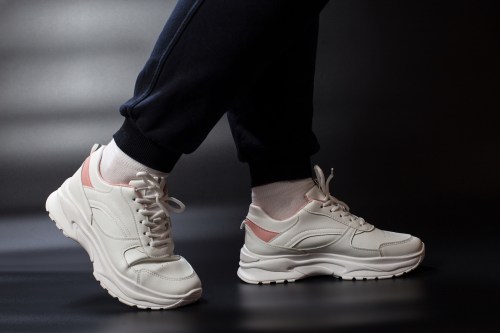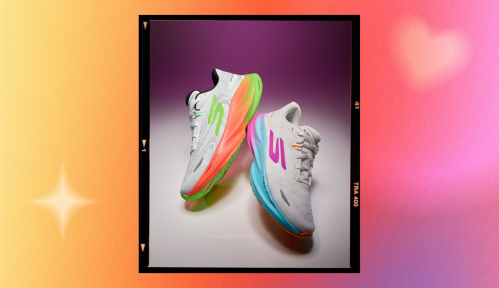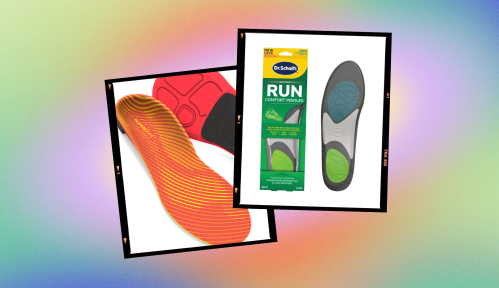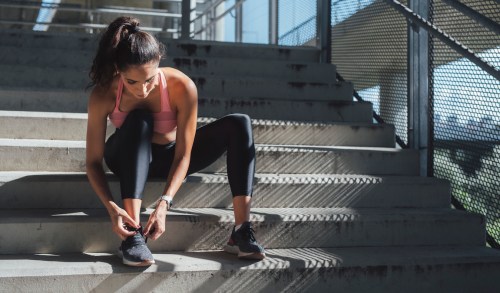Wait, Is There Such a Thing as Shoes That Are *Too* Comfortable? Experts Say ‘Yes’
As we enter the era of super-soft footwear, it begs the question: Can shoes be too comfortable? Hear what foot experts think.

The age of the max-cushioned shoe is very much upon us. And if you’re as much of a fan of a tall stack of foam underfoot as I am, it’s possible that you’ve lovingly described wearing your favorite sneaks as feeling like you’re “walking on pillows.” But as we enter the era of super-soft footwear, it begs the question: Can shoes be too comfortable?
Experts in This Article
body and posture experts, manual osteopath, chiropractor, myofascial release therapist, clinic director of the[fix], designer of dr LIZA shoes, and guest lecturer at OCAD University.
board-certified podiatric foot and ankle surgeon at Luxe Podiatry
Unfortunately, cushion lovers, it may be time for a reality check. “The problem with walking on pillows is that our body was not designed to [do that],” says Liza Egbogah, DC, DOMP, a posture expert with her own collection of orthopedic shoes. “If you think about walking on an actual pillow, your ankles are going to roll in, it’s hard to balance, and you’re going to feel a strain on your knees and your back. Because most people are overpronators, the last thing they need is a shoe that feels like a pillow because that’s going to accentuate the [rolling inward of your foot toward your arch].”
Encouraging overpronation is just the beginning—here are the downsides of wearing shoes that are too comfortable
The human foot is designed to walk barefoot on surfaces like soil, says Dr. Egbogah. In our modern age, cushion is key to act as a shock absorber when walking or standing on harder surfaces, but too much of it, and you begin to lose the support and stability you need underfoot for proper balance.
You also run the risk of losing strength in the muscles and ligaments on the bottoms of your feet. “Once you have those really cushioned shoes, people start to rely on them because your own body isn’t doing the work to stabilize or strengthen,” says Suzanne Fuchs, DPM, a podiatric surgeon in Florida. “The foot muscles become weaker over time, which could cause a decrease in the height of the arch of the foot.”
When those weakened feet find themselves not in cushioned shoes—like walking barefoot on hardwood floors—they will be more susceptible to plantar fasciitis, a painful inflammation of the tissue on the bottom of the foot that connects the heel bone to the toes, says Dr. Fuchs. Though putting those sneakers back on may temporarily relieve the pain, Dr. Egbogah says that the lack of support can cause the plantar fascia to twist and strain, leading to more inflammation.
Too much cushion can also compromise our control, balance, and proprioception (your ability to sense where your body is in space), says Dr. Fuchs, which could lead to an increased risk of ankle sprains. (Dr. Egbogah says she saw an uptick in ankle and foot fractures during the pandemic, which she attributes to people forgoing their more supportive formal shoes in favor of wearing cushiony sneakers all the time.) The exacerbated overpronation that can come with super-cushioned shoes can also put pressure on the inside of the knees, and cause hip and back pain further up the leg, says Dr. Egbogah.
Given this, it’s not surprising to discover that overly cushioned shoes can be especially problematic for those who already overpronate. Dr. Egbogah says even those with a perfect gait could see issues like metatarsalgia, weakened arches, and misalignment. “It can push your whole posture forward because you’re sinking into the shoes,” she says. “You could have the same issues with back pain and knee pain, even if you don’t have overpronation.”
How to tell if your shoes are too comfortable
Not all cushioning is bad—in fact, you very much need some cushion for shock absorption, especially if you’re running or jumping, standing on hard surfaces, or have high arches. But how much is too much? There are a few easy ways to tell: For one, when you put your foot into the shoe, it shouldn’t feel like your foot is sinking into it—you should feel some resistance and support, says Dr. Egbogah. (She likens it to the feeling of sitting on a firm mattress with a soft topper.)
If you feel more unstable or unbalanced after putting on the shoe, or like there’s an increased load on either side of your ankles, that’s probably a red flag, too, says Dr. Fuchs, as is a shoe that’s both super cushiony and heavy, as that combination can lead to even more instability.
You also shouldn’t be able to easily bend your shoe in half, or twist it like a towel. And if you push your thumb into the insole for a few seconds and it leaves an imprint rather than retaining its shape, that’s a sign the foam is too squishy, says Dr. Egbogah.
While you can sometimes judge a shoe by the thickness of the cushion, the quality of the foam is what’s really important. “The cheaper foams are the ones where you really sink in, versus a high-density, good-quality foam that has spring-back,” says Dr. Egbogah. Most running shoe brands—Nike, New Balance, Brooks, Asics, Saucony, etc—are typically a safe bet, she says, since those companies use higher-quality foam (like EVA) that’s been performance-tested. But these rules apply to any type of shoe, not just sneakers. As a general rule, anything that’s labeled an orthopedic shoe is also a good option, Dr. Egobogah says, as those are designed to provide sufficient support.
And cushion addicts, fear not. Wearing your pillowy shoes every once in a while probably isn’t going to hurt you. “It’s absolutely okay to wear your pillowy, fluffy shoes if you’re just on your feet for 10 or 15 minutes—they’re not going to cause permanent damage.”
Sign up for the Well+Good SHOP Newsletter
Get exclusive deals on wellness, beauty, fitness, and food products that have been hand-picked by our editors.
Got it, you've been added to our email list.









